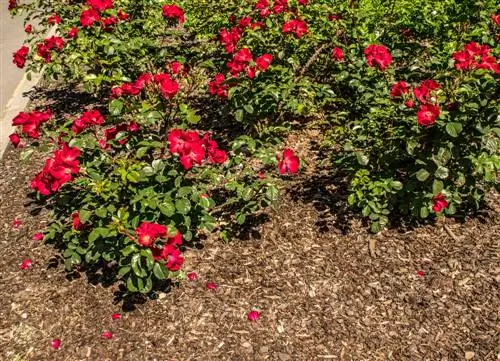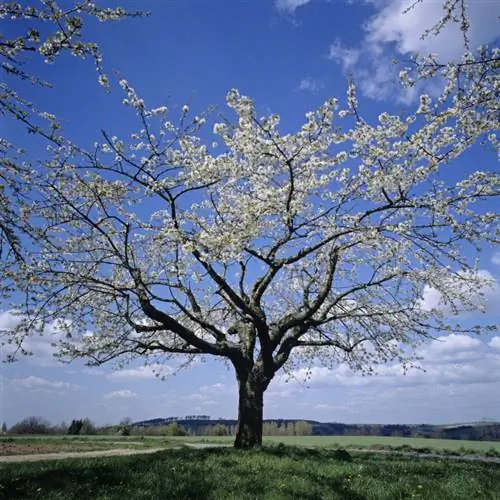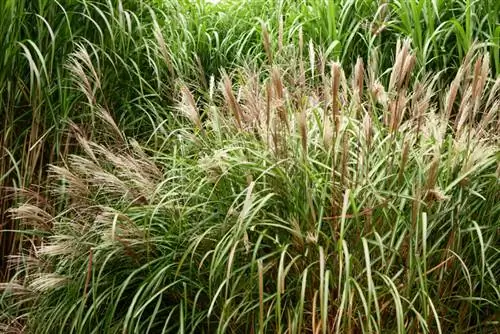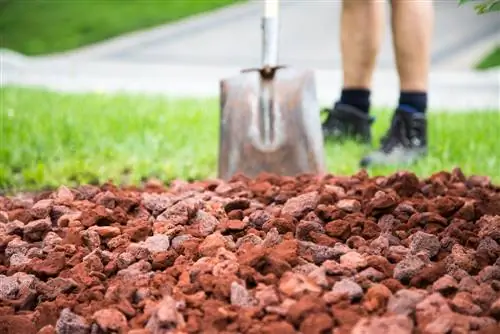- Author admin [email protected].
- Public 2023-12-16 16:46.
- Last modified 2025-01-23 11:21.
When it comes to bark mulch, gardening opinions differ: Some praise the material as a panacea that prevents weeds and keeps moisture in the soil. Others, on the other hand, believe that bark mulch has no place except on paths and under trees in the garden - and certainly not in the flower bed. Read what's actually true.
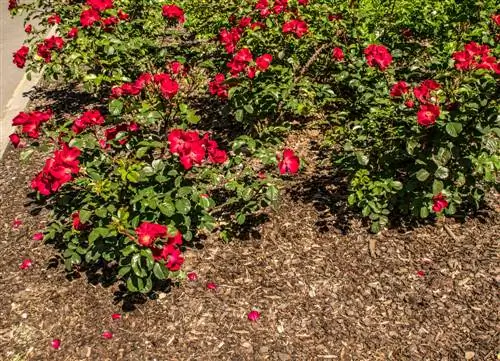
Is bark mulch recommended on flower beds?
Bark mulch on a flower bed can retain moisture in the soil, reduce weed growth and protect roots from frost. However, it removes nutrients from the soil. Before mulching, a slow-release fertilizer or compost should be applied to provide the plants with sufficient supply.
What are the advantages and disadvantages of mulching with bark mulch?
In fact, mulching with bark mulch has both advantages and disadvantages that cannot go unmentioned. In this way, the material retains moisture in the soil and prevents it from drying out prematurely during dry times. Furthermore, bark mulch on the bed reduces the appearance of weeds, which in turn saves you a lot of work. However, this effect should not be overestimated, because as a weed protection layer you would have to spread the bark mulch much thicker than just three to four centimeters. In addition, bark mulch is an organic material and as such rots very quickly - but in the process it removes valuable nutrients from the soil, especially nitrogen. These, in turn, are missing from the flowering bushes, which are often heavily consuming. Only after complete rotting are the previously bound nutrients released again.
What do you have to pay attention to when applying bark mulch?
However, this disadvantage can be compensated for by applying a suitable long-term fertilizer (€45.00 on Amazon) before mulching and thus ensuring that the plants are adequately supplied. A thick layer of compost under the mulching material also serves this purpose, so you don't necessarily have to use mineral fertilizers. Also make sure that the layer of bark mulch is not too thick: three to four centimeters is sufficient. So that weeds don't have a chance, you should weed the bed thoroughly beforehand and, above all, remove root weeds thoroughly. By the way, you can also cover onion flowers (which include many typical spring bloomers) with bark mulch without worry; this layer - if it is not too thick - will easily be penetrated in spring.
Alternatives to bark mulch
However, you don't necessarily have to cover the flower bed with bark mulch. Lawn and chopped hedge clippings as well as straw are particularly suitable for supplying nutrients. If, on the other hand, the bed is to be designed to be easy to care for, we recommend creating a gravel or stone bed.
Tip
In winter, bark mulch is an effective way to cover the bed and protect the roots of the plants in it from frost.

